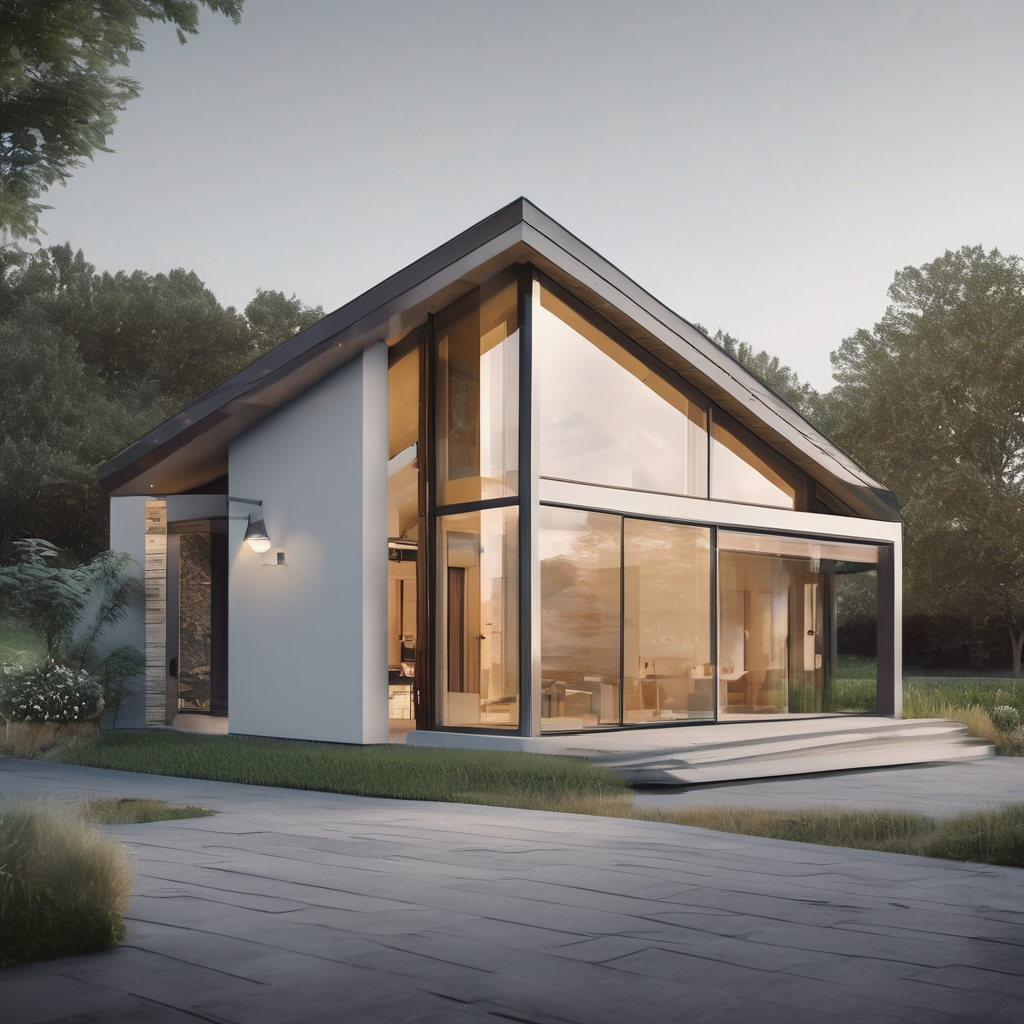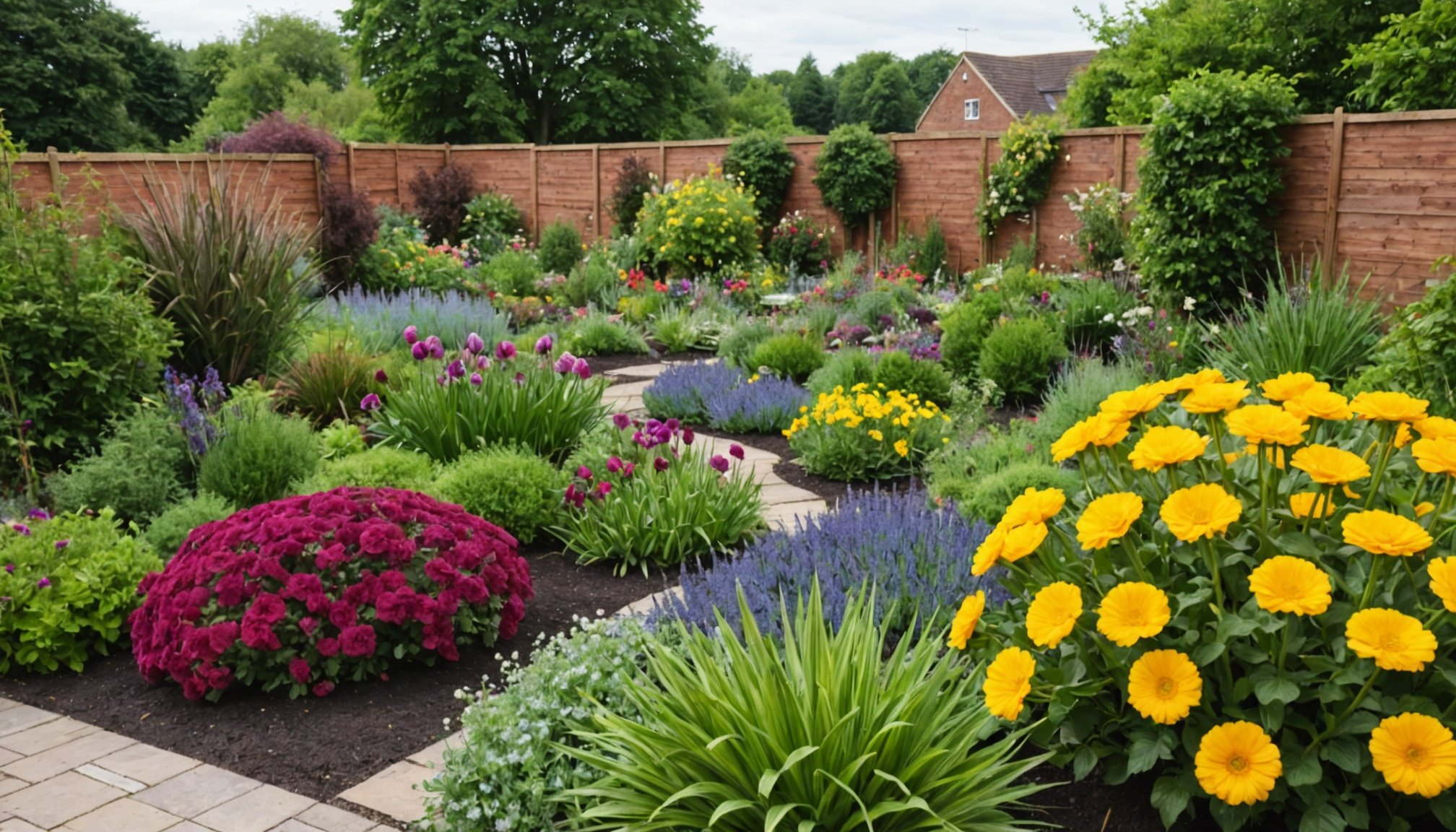Year-Round Colour Planning for UK Gardens
Creating a vibrant year-round garden colour scheme in the UK demands thoughtful planning tailored to the local climate. The key is selecting plants that provide continuous interest through different seasons, ensuring your garden never feels dull. Succession planting plays a crucial role here—this technique involves timing different plants to flower or display foliage sequentially, rather than simultaneously. This keeps your garden visually appealing all year.
When designing your UK garden design, consider the unique challenges of the British weather. Winters can be damp and cold, summers mild, so plants must be resilient and suited to these conditions. Evergreen shrubs and hardy perennials form an excellent base, providing consistent colour and structure even in winter months. Complement these with spring bulbs like daffodils and crocuses for early vibrancy, followed by summer perennials and late-season plants such as asters for autumn.
Topic to read : How Can I Create a Nature-Inspired Sanctuary in My UK Garden?
Adapting your colour planning UK garden to the unpredictable weather involves choosing a diverse palette of textures and shades. Including evergreens, deciduous plants with striking bark, and late-blooming species creates seasonal interest and ensures your garden withstands the elements gracefully. Adopting these strategies will make your garden thrive in every season.
Essential Plant Types for Continuous Colour
Selecting the right plants for year-round colour in your UK garden means combining evergreens, shrubs, trees, bulbs, perennials, and annuals strategically. Evergreen plants UK are fundamental for structure and constant greenery through all seasons. Their foliage provides a reliable backdrop and ensures your garden never looks bare, especially in winter.
Additional reading : How Can You Boost Curb Appeal with Simple Garden Upgrades?
Shrubs and trees add height and form, creating layers that catch the eye throughout the year. For instance, evergreen shrubs like boxwood or holly maintain vibrant green tones in colder months, while deciduous trees provide bursts of autumn colour with their changing leaves. These elements give depth and interest regardless of blooming periods.
To achieve continuous bursts of colour, incorporate bulbs such as daffodils and tulips for spring vibrancy. Perennials like lavender and geraniums bring colour in summer, while annuals like pansies and marigolds fill gaps with bright accents. Combining these ensures your garden flows seamlessly from season to season.
For UK conditions, consider hardy varieties tailored to the climate. Plants such as hellebores are valued for winter flowers, while native species typically perform well as they are adapted to local weather and soil. Using a mixture of these plant types guarantees sustained aesthetic appeal and a dynamic garden environment all year round.
Seasonal Layering and Succession Planting
Achieving vibrant seasonal colour in gardens requires mastering succession planting UK gardeners value highly. This technique involves carefully planning overlapping flowering times to ensure your garden never loses its appeal. By selecting species that bloom in sequence, you create layers of colour that shift gracefully from one season to the next.
When developing effective garden planting plans, start by grouping plants with different peak bloom periods. Early spring bulbs like crocuses can give way to summer perennials such as lavender, followed by autumn-flowering sedums. This strategy guarantees continuous visual interest throughout the year.
To design a palette that flows naturally, blend plants with complementary hues and textures. Incorporate evergreens for year-round structure alongside delicate annuals that provide bursts of colour. Integrating continuous-interest plants with those that bloom sporadically balances predictability with surprise, keeping the garden dynamic.
Succession planting UK experts recommend reviewing bloom calendars for each species. This ensures your selections harmonize without overwhelming one another, fostering a balanced rhythm of growth and bloom. With practiced layering, your outdoor space transforms into a living tapestry, celebrating the changing seasons with enduring charm and colour.
Designing Plant Layouts for Ongoing Visual Appeal
Creating dynamic and attractive garden spaces that evolve beautifully
Crafting effective planting layouts involves thoughtful arrangement to maintain continuous interest. In garden design UK, structuring borders and beds to maximize garden colour combinations is crucial. Group plants strategically by colour, height, and blooming time. This ensures a harmonious sequence of flowering, providing vibrant displays throughout the seasons rather than a single peak.
Grouping plants by height helps build layers, crucial for depth and texture in your garden. Taller plants at the back and shorter ones at the front make colours more visible and create a balanced visual flow. Also, consider repeating colour themes in different areas to unify the garden design.
Incorporating containers adds flexibility to planting layouts. Containers allow you to experiment with garden colour combinations and reposition focal points easily. Focal points, such as sculptures or specimen plants, anchor the garden’s composition, providing visual rest and enhancing the overall appeal.
This dynamic approach to planting layouts not only enhances ongoing visual interest but also makes maintenance and seasonal changes easier to manage, which is vital in the evolving context of garden design in the UK.
Maintenance and Care for Optimal Colour
Maintaining colourful plants in your garden requires consistent attention throughout the year. In the UK, garden maintenance focuses heavily on adapting to seasonal changes. During spring and summer, regular feeding with balanced fertilisers promotes vibrant blooms. Feeding not only fuels growth but also extends the flowering period, helping your garden stay visually appealing longer.
Pruning and deadheading are essential tasks. Pruning helps shape plants and encourages healthy new growth, while deadheading—removing spent flowers—prevents energy wastage and stimulates further blooms. These practices are vital to sustaining colour in your garden and should be part of your regular garden maintenance UK schedule.
Pest and disease management is another critical element. Early identification allows targeted treatments, reducing damage without excessive chemical use. Weather conditions, such as frost or drought, also affect plant health. Protecting plants with mulch helps retain moisture and shields roots during cold spells.
Consistent garden maintenance UK and paying attention to specific needs of your plants ensure they thrive. By combining feeding, pruning, deadheading, and smart pest control, your garden will maintain its dazzling array of colours year-round with minimal stress.
Visual Inspiration and Garden Examples
Exploring UK garden ideas reveals stunning examples where colour flourishes across all seasons. Many UK gardens have mastered the art of colourful garden inspiration by carefully planning flower varieties to ensure vibrant blooms from spring through winter. For instance, gardens with layered planting schemes often incorporate early spring bulbs, summer perennials, autumn shrubs, and winter evergreens, achieving continuous visual interest.
Visual guides can clarify how to manage colour succession effectively. These resources often showcase specific plant combinations, such as mixing hellebores with late-flowering asters, which guarantees successive bursts of colour. Understanding bloom times and complementary foliage helps design gardens that remain lively rather than fading after a single season.
Several example UK gardens serve as valuable references. These gardens demonstrate how integrating textures and hues creates balanced palettes. Studying their layout offers practical ideas for different garden sizes and styles. Additionally, using resources to plan your garden’s timeline ensures you select plants that thrive in local conditions while contributing to year-round charm.
By looking at real-world examples and drawing inspiration from these well-curated UK garden ideas, gardeners can confidently design spaces with continuous colour appeal and creative planting arrangements.





